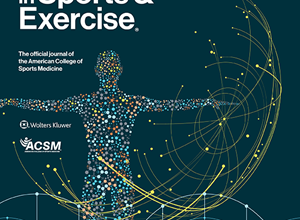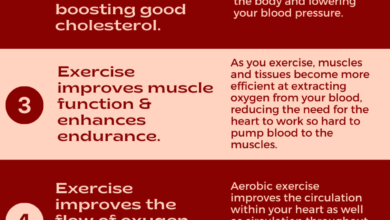
What is the Difference between Exercise Physical Activity And Fitness: Explained
Understanding the terms “exercise,” “physical activity,” and “fitness” can be confusing. They are often used interchangeably, but they have distinct meanings.
Exercise refers to planned, structured, and repetitive movements aimed at improving physical health. Physical activity includes any movement that burns energy, from walking to cleaning. Fitness is the result of regular exercise and physical action, reflecting overall health and well-being.
Knowing the differences can help you set better health goals. It also allows you to create more effective fitness plans tailored to your needs. In this blog, we will delve into each term, explaining how they differ and why each is important. This clarity will guide you on your journey to a healthier, fitter life.
Introduction To Exercise, Physical Activity, And Fitness
Exercise, physical activity, and fitness are terms often used interchangeably. Yet, they have distinct meanings. Understanding these differences helps you adopt a healthier lifestyle. This article will delve into each term.
Defining Key Terms
Exercise is a planned, structured, and repetitive body movement. It aims to improve or maintain one or more components of physical fitness.
Physical activity includes any body movement that works your muscles and requires energy. Activities like walking, gardening, or cleaning fall into this category.
Fitness refers to the ability to carry out daily tasks with vigor. It involves the performance of the heart and lungs, as well as muscle strength and endurance.
Importance Of Distinction
Recognizing the difference between these terms is crucial. It helps you set clear and achievable goals.
For instance, if you aim to improve your fitness, you may need a mix of exercise and physical activity. This combined effort ensures a balanced and healthy lifestyle.
Here is a simple table to summarize the key distinctions:
| Term | Definition |
|---|---|
| Exercise | Planned, structured body movement aimed at improving fitness |
| Physical Activity | Any body movement that requires energy |
| Fitness | Ability to perform daily tasks with vigor |
Understanding these terms aids in better planning. It also helps in tracking progress and achieving long-term health benefits.

Credit: cathe.com
What Is Exercise?
Exercise refers to planned, structured, and repetitive physical actions. These activities are performed to improve or maintain physical fitness. Unlike general physical activity, which includes any movement that works your muscles and requires energy, exercise is more specific and intentional.
Types Of Exercise
Exercise can be divided into several categories, each focusing on different aspects of fitness:
- Aerobic Exercise: Activities that increase your heart rate and breathing. Examples include walking, running, swimming, and cycling.
- Strength Training: Exercises aimed at building muscle mass and strength. Examples include weight lifting, resistance band exercises, and bodyweight exercises.
- Flexibility Exercises: Activities that improve the range of motion of your muscles and joints. Examples include stretching, yoga, and pilates.
- Balance Exercises: Exercises designed to improve stability and prevent falls. Examples include standing on one leg, balance walks, and tai chi.
Benefits Of Regular Exercise
Engaging in regular exercise offers numerous benefits for both physical and mental health:
| Benefit | Description |
|---|---|
| Improved Cardiovascular Health | Regular aerobic exercise strengthens the heart and improves blood circulation. |
| Weight Management | Exercise helps in burning calories, leading to weight loss or maintenance. |
| Increased Muscle Strength | Strength training builds and maintains muscle mass. |
| Better Mental Health | Exercise releases endorphins, reducing stress and improving mood. |
| Enhanced Flexibility and Balance | Flexibility and balance exercises reduce the risk of falls and improve overall body function. |
Incorporating various types of exercise into your routine can lead to a healthier, more balanced life. Start small and gradually increase the intensity and duration of your workouts.
Understanding Physical Action
Physical activity is any movement that works your muscles. It requires energy. This can include everyday activities or structured exercise. It is different from fitness, which involves a higher level of physical performance. Understanding physical activity helps in promoting a healthier lifestyle.
Daily Activities As Physical Activity
Physical activity is not just about going to the gym. It includes daily tasks too. Examples of daily activities that count as physical activity are:
- Walking to the store
- Cleaning the house
- Gardening
- Playing with your kids
- Taking the stairs instead of the elevator
These activities help you stay active throughout the day. They are simple and easy to incorporate into your routine.
Health Benefits Of Physical Activity
Engaging in regular physical activity has many health benefits. Some of the key benefits include:
- Improving cardiovascular health
- Strengthening muscles and bones
- Boosting mental health and mood
- Reducing the risk of chronic diseases like diabetes
- Helping maintain a healthy weight
Physical activity also increases energy levels. It improves sleep quality. It can enhance your overall quality of life.
Defining Fitness
Understanding fitness can be confusing. It’s important to know what it means. Fitness is not just about looking good. It’s about how well your body works. Fitness includes strength, endurance, and flexibility. Let’s dive deeper into what fitness really means.
Components Of Fitness
Fitness has several key components:
- Cardiovascular Endurance: How well your heart and lungs work during exercise.
- Muscular Strength: The amount of force your muscles can produce.
- Muscular Endurance: How long your muscles can work without getting tired.
- Flexibility: The range of motion of your joints.
- Body Composition: The ratio of fat to lean mass in your body.
Measuring Fitness Levels
There are different ways to measure fitness levels:
- Cardiovascular Tests: Such as running or cycling tests.
- Strength Tests: Like how much weight you can lift.
- Endurance Tests: How many push-ups or sit-ups you can do.
- Flexibility Tests: Such as the sit-and-reach test.
- Body Composition Tests: Using tools like calipers or body scans.
Measuring fitness helps you track progress. It also helps set realistic goals. Fitness is personal. What works for one person might not work for another.
Exercise Vs Physical Activity
Understanding the difference between exercise and physical activity helps in achieving fitness goals. Both terms often get used interchangeably, but they are not the same. Exercise and physical activity have distinct characteristics and purposes.
Structured Vs Unstructured
Exercise is structured. It follows a specific plan or routine. Think of actions like yoga classes, weightlifting sessions, or running schedules. These are planned with a goal in mind.
Physical activity, on the other hand, is unstructured. It includes any movement that burns calories. Walking the dog, gardening, or even cleaning the house counts. These activities are not usually planned but are still beneficial.
Intensity And Purpose
Exercise often has higher intensity. It aims to improve specific aspects of fitness. For example, lifting weights builds muscle strength, while running enhances cardiovascular health. The purpose is clear and targeted.
Physical activity can vary in intensity. It ranges from light to moderate, like casual walking or stretching. The purpose is broader. It focuses on general well-being and daily movement. Physical activity integrates easily into daily life.
Fitness And Its Relationship With Exercise And Physical Activity
Fitness refers to the overall condition of your body. It measures your ability to perform daily tasks with ease. Exercise and physical activity play key roles in achieving and maintaining fitness. While they are related, they serve different purposes. Understanding their relationship can help you improve your health and well-being.
How Exercise Enhances Fitness
Exercise is a planned, structured, and repetitive activity. It aims to improve or maintain physical fitness. Regular exercise boosts cardiovascular health, strength, and flexibility. It also helps in weight management and improves mental health. Here are some ways exercise enhances fitness:
- Improves heart and lung function
- Builds and tones muscles
- Increases endurance
- Promotes better sleep
- Reduces stress and anxiety
Engaging in different types of exercise, like aerobic, strength training, and flexibility exercises, ensures a well-rounded fitness routine.
Role Of Physical Activity In Maintaining Fitness
Physical activity includes any movement that uses energy. This could be walking, gardening, or even house chores. Unlike structured exercise, physical activity is part of your daily routine. It is essential for maintaining fitness and overall health. Here are some benefits of physical activity:
- Helps in weight control
- Improves mood
- Boosts energy levels
- Supports heart health
- Strengthens bones and muscles
Incorporating more physical activity into your day can significantly improve your fitness levels. You can take the stairs instead of the elevator or walk to nearby destinations.
Summary Table: Exercise vs. Physical Activity
| Aspect | Exercise | Physical Activity |
|---|---|---|
| Definition | Planned, structured, repetitive | Any movement using energy |
| Purpose | Improve fitness | Maintain overall health |
| Examples | Running, weight lifting, yoga | Walking, gardening, cleaning |
| Frequency | Regular, scheduled | Daily activities |
Both exercise and physical activity are crucial for achieving and maintaining fitness. By understanding their roles, you can create a balanced and effective fitness routine.
Creating A Balanced Routine
Understanding the difference between exercise, physical activity, and fitness is crucial. Each plays a unique role in maintaining health. To achieve a balanced routine, it’s important to combine these elements effectively. This ensures overall well-being and promotes a healthy lifestyle.
Combining Exercise And Physical Activity
Exercise and physical activity are often used interchangeably. However, they are not the same. Exercise is planned, structured, and repetitive. Its goal is to improve physical fitness. Examples include running, swimming, and weightlifting.
Physical activity includes any movement that requires energy. This can be walking the dog, gardening, or cleaning the house. It’s less structured than exercise but still beneficial.
To create a balanced routine, combine both. For instance:
- Start your day with a morning jog (exercise).
- Take the stairs instead of the elevator (physical activity).
- Join a dance class (exercise).
- Walk to the grocery store (physical activity).
Tips For Improving Overall Fitness
Improving overall fitness requires consistency and variety. Follow these tips to enhance your fitness journey:
- Set realistic goals: Start with small, achievable targets.
- Mix it up: Include different types of exercise. This prevents boredom and works for various muscle groups.
- Stay active daily: Incorporate physical activity into your routine. Aim for at least 30 minutes a day.
- Listen to your body: Rest when needed. Overtraining can lead to injuries.
- Stay hydrated: Drink water before, during, and after workouts.
By following these tips, you can enhance your overall fitness and lead a healthier life.
| Aspect | Exercise | Physical Activity |
|---|---|---|
| Definition | Planned, structured, repetitive | Any movement that requires energy |
| Examples | Running, swimming, weightlifting | Walking, gardening, cleaning |
| Goal | Improve physical fitness | Daily movement, health benefits |

Credit: blog.myshapa.com
Common Misconceptions
Many people often confuse exercise, physical activity, and fitness. This confusion leads to common misconceptions about how they relate to each other. Understanding these misconceptions can help you better plan your health and wellness routines.
Exercise Myths
There are several myths about exercise that can mislead people:
- Myth: You need to go to the gym to exercise.
Reality: Exercise can be done anywhere, even at home. - Myth: Exercise must be intense to be effective.
Reality: Moderate exercise can be just as beneficial. - Myth: Only cardio counts as exercise.
Reality: Strength training and flexibility exercises are important too.
Clarifying Physical Activity Misunderstandings
Physical activity is often misunderstood. Here are some common misconceptions:
- Misunderstanding: Physical activity means structured workouts.
Fact: Any movement, like walking or gardening, counts as physical activity. - Misunderstanding: You need to be active for hours.
Fact: Even short periods of activity can be beneficial. - Misunderstanding: Physical activity is only for young people.
Fact: People of all ages can benefit from being active.
Fitness is another area where misconceptions are common. Many think that only athletes are fit. In reality, fitness is about overall health and well-being. It includes strength, flexibility, and endurance. Everyone can achieve a level of fitness that benefits their health.

Credit: www.differencebetween.net
Frequently Asked Questions
What Is Exercise?
Exercise is structured physical activity aimed at improving fitness. It includes activities like running, swimming, and weightlifting.
How Does Physical Activity Differ From Exercise?
Physical activity includes any movement that uses energy, like walking or gardening. Exercise is planned and structured.
What Defines Fitness?
Fitness refers to the ability to perform daily activities with strength, endurance, and flexibility. It involves overall health.
Can Exercise Improve Overall Fitness?
Yes, regular exercise can improve cardiovascular health, muscle strength, and flexibility, enhancing overall fitness.
Conclusion
Understanding the differences between exercise, physical activity, and fitness is vital. Exercise is planned, structured movement. Physical activity includes all movement. Fitness measures your overall health. Knowing these distinctions helps you set clear goals. Stay active daily. Include regular exercise.
Aim for better fitness. Small steps lead to big changes. Prioritize your health. Enjoy the journey to a fitter you.





